
Interest is surging in tiny homes — livable dwelling units that typically measure under 400 square feet. Much of this interest is driven by media coverage claiming that living in tiny homes is good for the planet.
It may seem intuitively obvious that downsizing to a tiny home would reduce one’s environmental impact, since it means occupying a much smaller space and consuming fewer resources. But little research has been done to actually measure how people’s environmental behaviors change when they make this drastic move.
For my doctorate in environmental design and planning, I sought to fill this gap in knowledge by developing a study that could provide measurable evidence on how downsizing influences environmental impacts. First, I surveyed 80 downsizers who had lived in tiny homes for a year or more to calculate their ecological footprints in prior housing and current ecological footprints in their tiny houses. Then I conducted nine in-depth interviews to learn about behaviors that changed after downsizing.
I found that among 80 tiny home downsizers located across the United States, ecological footprints were reduced by about 45% on average. Surprisingly, I found that downsizing can influence many parts of one’s lifestyle and reduce impacts on the environment in unexpected ways.
The unsustainable U.S. housing model
In recent decades, the building trend has been to “go big.” Newly constructed homes in the United States generally have a larger average square footage than in any other country in the world.
In 1973 the average newly constructed U.S. home measured 1,660 square feet. By 2017 that average had increased to 2,631 square feet — a 63% increase. This growth has harmed the environment in many ways, including loss of green space, increased air pollution and energy consumption, and ecosystem fragmentation, which can reduce biodiversity.
The concept of minimalist living has existed for centuries, but the modern tiny house movement became a trend only in the early 2000s, when one of the first tiny home building companies was founded. Tiny homes are an innovative housing approach that can reduce building material waste and excessive consumption. There is no universal definition for a tiny home, but they generally are small, efficient spaces that value quality over quantity.
People choose to downsize to tiny homes for many reasons. They may include living a more environmentally friendly lifestyle, simplifying their lives and possessions, becoming more mobile or achieving financial freedom, since tiny homes typically cost significantly less than the average American home.
Many assessments of the tiny-house movement have asserted without quantitative evidence that individuals who downsize to tiny homes will have a significantly lower environmental impact. On the other hand, some reviews hint that tiny home living may lend itself to unsustainable practices.
Understanding footprint changes after downsizing
This study examined tiny home downsizers’ environmental impacts by measuring their individual ecological footprints. This metric calculates human demand on nature by providing a measurement of land needed to sustain current consumption behaviors.
To do this, I calculated their spatial footprints in terms of global hectares, considering housing, transportation, food, goods and services. For reference, one global hectare is equivalent to about 2.5 acres, or about the size of a single soccer field.
I found that among 80 tiny home downsizers located across the United States, the average ecological footprint was 3.87 global hectares, or about 9.5 acres. This means that it would require 9.5 acres to support that person’s lifestyle for one year. Before moving into tiny homes, these respondents’ average footprint was 7.01 global hectares (17.3 acres). For comparison, the average American’s footprint is 8.4 global hectares, or 20.8 acres.
My most interesting finding was that housing was not the only component of participants’ ecological footprints that changed. On average, every major component of downsizers’ lifestyles, including food, transportation and consumption of goods and services, was positively influenced.
As a whole, I found that after downsizing people were more likely to eat less energy-intensive food products and adopt more environmentally conscious eating habits, such as eating more locally and growing more of their own food. Participants traveled less by car, motorcycle, bus, train and airplane, and drove more fuel-efficient cars than they did before downsizing.
They also purchased substantially fewer items, recycled more plastic and paper, and generated less trash. In sum, I found that downsizing was an important step toward reducing ecological footprints and encouraging pro-environmental behaviors.
To take these findings a step farther, I was able to use footprint data to calculate how many resources could potentially be saved if a small portion of Americans downsized. I found that about 366 million acres of biologically productive land could be saved if just 10% of Americans downsized to a tiny home.
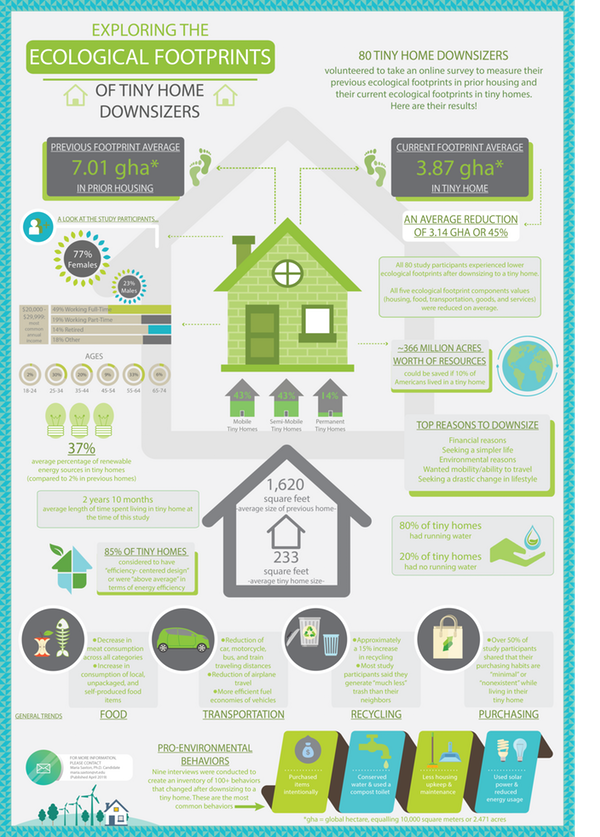
Fine-tuning footprint analyses
My research identified more than 100 behaviors that changed after downsizing to a tiny home. Approximately 86% had a positive impact, while the rest were negative.
Some choices, such as harvesting rainwater, adopting a capsule wardrobe approach and carpooling, reduced individual environmental impacts. Others could potentially expand people’s footprints — for example, traveling more and eating out more often.
A handful of negative behaviors were not representative of all participants in the study, but still are important to discuss. For instance, some participants drove longer distances after moving to rural areas where their tiny homes could be parked. Others ate out more often because they had smaller kitchens, or recycled less because they lacked space to store recyclables and had less access to curbside recycling services.
It is important to identify these behaviors in order to understand potential negative implications of tiny home living and enable designers to address them. It is also important to note that some behaviors I recorded could have been influenced by factors other than downsizing to a tiny home. For instance, some people might have reduced their car travel because they had recently retired.
Nonetheless, all participants in this study reduced their footprints by downsizing to tiny homes, even if they did not downsize for environmental reasons. This indicates that downsizing leads people to adopt behaviors that are better for the environment. These findings provide important insights for the sustainable housing industry and implications for future research on tiny homes.
For instance, someone may be able to present this study to a planning commission office in their town to show how and why tiny homes are a sustainable housing approach. These results have the potential to also support tiny home builders and designers, people who want to create tiny home communities and others trying to change zoning ordinances in their towns to support tiny homes. I hope this work will spur additional research that produces more affordable and sustainable housing choices for more Americans.![]()
Maria Saxton, is a doctoral candidate in Environmental Planning and Design at Virginia Tech. This article is republished from The Conversation under a Creative Commons license. Read the original article.
Weekly Newsletter
Get building science and energy efficiency advice, plus special offers, in your inbox.





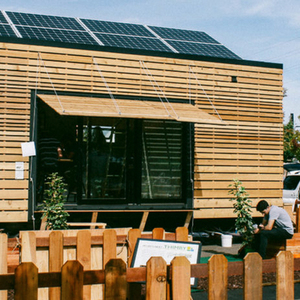
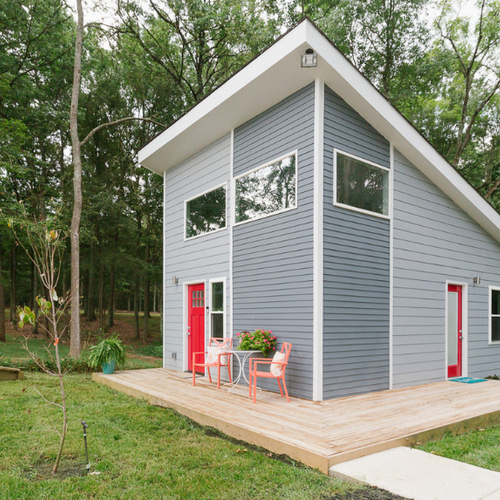
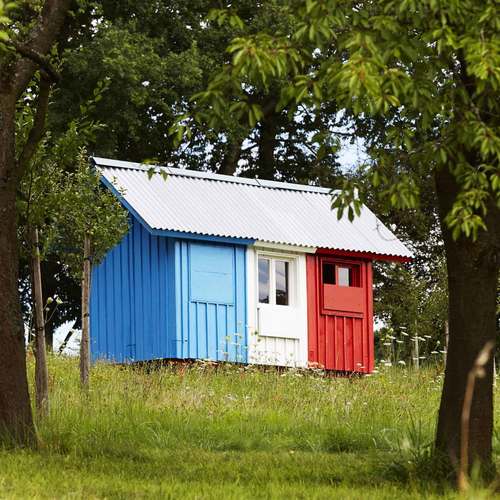
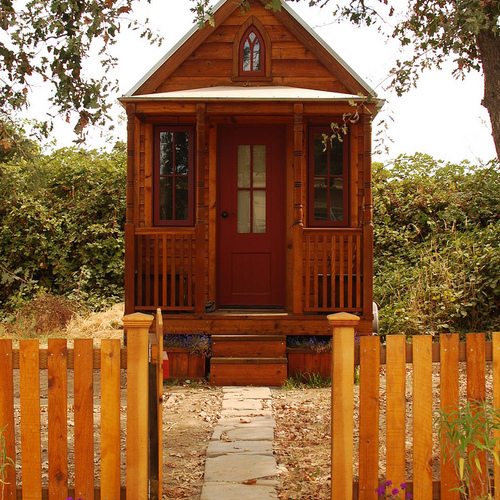






9 Comments
I wonder if this reduction calculation was adjusted for family size and age?
As the owner of a tiny house on wheels, I found this article kind of silly. I would be interested to see a complete list of the “more than 100 behaviors that changed after downsizing to a tiny home”.
I did identify with the linked article, https://www.fastcompany.com/90302556/tiny-houses-have-a-dark-secret.
“All the tiny-houser millennials that I interviewed wanted to own bigger houses in the future; they saw tiny living as a means of owning something now and being able to save at the same time. Several young couples planned to upgrade once they had children, selling their tiny homes or even keeping them as guesthouses.”
We bought and sited our tiny house on a back corner of a large lot in town to live in while renovating the small (~900 sq ft) 1920s cottage that is the property’s primary dwelling. I’m very familiar with RVs, and can tell you that our tiny house is a much more comfortable and attractive option. Our neighbors all think it’s nice; and pleasing the neighbors is important.
It’s been invaluable in that it allows us time learn from such resources as GBA, plan and save, and build a little at a time. Only time will tell how valuable or useful the tiny house will be to us over the long term.
“I came across several tiny households that were using external storage spaces for items that wouldn’t fit in the home, for example. Referred to as a “dirty secret” by one interviewee, another explained her desire to keep items from her previous home in case she changed her mind about tiny living.”
It takes a metal storage container and a garden shed to make the tiny house a short term solution for us. But it was the addition of a covered porch that really gave us room for all of the things that are used often but do not store well inside.
Aaron,
That's a very interesting comment. I've seen research showing that six months after completion most tiny homes had been rented out or sold. If as most of us would agree, the minimum size of a usable house is quite a bit larger the a tiny home, they makes sense only as you use yours - as a stepping stone to something else.
As far as I can see, tiny houses are functionally indistinguishable from RVs. They work in the situations living in an RV would, but don't really add anything useful to the permanent housing stock.
Malcolm,
I agree with you. It is funny though how much interest our tiny house has generated. I spend a lot of time outside and get the most positive and inquisitive remarks from people walking and driving through the neighborhood. I usually stop what I’m doing to visit and answer questions, but do not take strangers inside for tours. I’d never get any work done if I allowed that!
You do not get a Toto flushing toilet in most RVs. It’s little things like that that distinguishes a tiny house on wheels from a typical RV. We did buy our tiny house with a RV loan and have RV insurance.
I hope our tiny house works well for us as a short term rental and/or guest house after we finish and move into the fixer-upper. When asked, I never recommend someone buy or build a tiny house on wheels.
Something I found really interesting, the guy who drove our tiny house to NM from WI mentioned how much better ours’ towed with its gable roof than others he’d delivered around the country with asymmetrical or shed roofs. Can you imagine driving a shed roofed house along the interstate? I’d rather pull an Airstream if mobility was my primary reason for buying an RV.
Aaron,
I didn't mean to imply tiny houses are just glorified RVs. They are usually much nicer. Just that as part of the housing stock, that's where they fit in.
There always seems to be a conflation between those on wheels, and those that are just very small houses. This article makes it, saying they could be a good idea if built in communities. Through out the last several centuries small houses were seen as a public health concern. Cramped tenements and small cottages were viewed as poor housing which compromised people's health and impeded their lives. Increased affluence, aided by codes which set minimum sizes for rooms, improved the housing stock over time. I can't understand why the recent large increase in average house size should logically lead to needing to reduce them back to tiny house dimensions. Surely the ideal is somewhere in between the two, allowing enough space for what we consider typical life, without the excesses of mansions?
" I can't understand why the recent large increase in average house size should logically lead to needing to reduce them back to tiny house dimensions. Surely the ideal is somewhere in between the two, allowing enough space for what we consider typical life, without the excesses of mansions?"
- Don't worry there are individuals who are in the position to influence public policy which have opinions with regards to the size of house you need in order to live the life they know you deserve. You're in good hands.
Instead of just focusing on tiny houses on wheels I would have liked the author of the study to focus on the environmental impact of just building a smaller house. The maximum size of 400 sq' for a tiny house on wheels has more to do with highway transport regulations that creating an environmentally responsible home. Yes, the home owners use less materials and energy to build and maintain their tiny home but what good is it to create the thing if you're planning on moving on up to something bigger in a couple of years?
Also, things often not discussed about the tiny house movement are the "contributions" from all the "other" people - the people who own the land you park your tiny house on and let you hook up to their water, sewage or electrical systems..
I myself am designing a perfectly practical and efficient small home in 468 sq' but what makes it work is that it's not forced to be 8'6" wide so that I can move it somewhere else without needing a special highway permit. I'd like to know how much smaller the environmental impact would be for a permanent small home that I can live in for the rest of my life compared to a home on wheels that is the same size?
FYI - UW Madison, WI builds zero energy tiny homes for their green building program and sells them at cost. Very good deal as you know they've been tested rigorously for energy impact.
Hooray! We are having a conversation about small footprint homes! Whether teeny, tiny, or not-so-big, with wheels or without, sadly, we live in a society where the word “small” has negative connotations (until we start using it more, that is.)
Case in point. Back in 1978, between my freshman and sophomore years in college, I had a summer job at our local McDonald’s. Training was extensive, and, 40 years later, I still remember several key points: 1) Make a suggestive sale (Would you like fries with that?), 2) Don’t stand around doing nothing - clean! and 3) Never say “small”. There were no “small” sizes @ Mc Donald’s in 1978; small was “regular”. Words are important and can be used to influence the masses.
For me, however, the word small is totally awesome. For most of our 38+ years together, Kevin and I have lived in small footprint dwellings. Our first home was a 1000 SF two bedroom bungalow. When we finished off the attic area, adding a bedroom, bath and storage, it became 1300 SF. We lived in it for 12 years and raised two kids, a dog and a cat. Our second home was a 576 SF two bedroom cabin. Our third home was originally an abandoned camp and included a 672 SF two bedroom ground floor apt where we resided for 3 years, while finishing the less small 1456 SF first and second floors above. We sold all 3 floors in 2013 to prepare for building our first DOE Zero Energy Home, which we completed in 2015. (Did I mention we lived in a 216 SF RV for 15 months while building?) Our Zero Energy Home is 2240 SF, BUT - - it houses two families; my aging parents live in the larger portion, and Kevin and I live in the 480 SF outlaw apt - for now, anyway, until we build something else. (And yes, it will be small.)
I applaud the Tiny House Movement because folks are discovering less expensive ways to live and learn. Contrary to what we’ve been told all of our lives, the American Dream is NOT a hefty mortgage it takes two paychecks to afford; for a house with rooms that are infrequently used, and filled with stuff we don’t need. I agree with Scott. We DO need to have more conversations about small footprint homes not on wheels.
Thank you, Maria, for initiating the conversation!
Log in or create an account to post a comment.
Sign up Log in